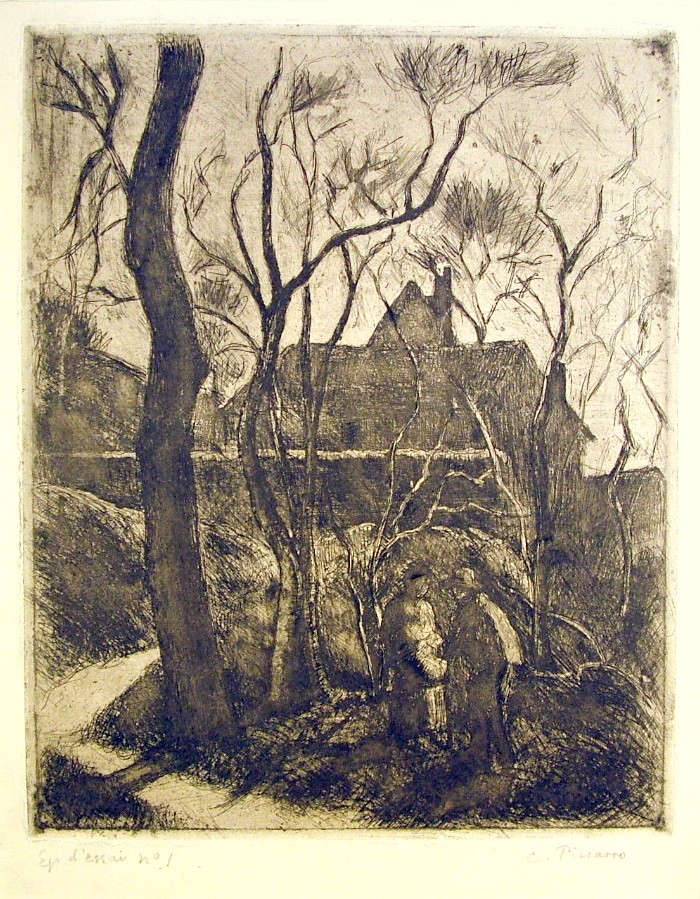Sente des Pouilleux, a Pontoise (Path at Pontoise)

Camille Pissarro (1830-1903), Sente des Pouilleux, a Pontoise (Path at Pontoise), grande planche, drypoint and aquatint, 1880, signed in pencil and inscribed “Ep d’essai no. 1” in pencil lower margin. Reference: Delteil 32, second state (of 2). In good condition, with margins (some creases, soft folds mostly in margins, a tiny repaired tear left margin edge not near image). Printed on heavy tan wove paper. 10 1/2 x 8 5/8, the sheet 14 1/4 x 10 1/8 inches, archival matting.
A fine atmospheric impression, printed in a brownish/black ink with a very light veil of aquatint (see discussion below). This impression was inked and wiped so as to convey a mood of impending darkness; another impression illustrated in Delteil is lighter.
Only a few proofs of this state were made; Pissarro’s inscription on this one suggests that this was the first proof made of the state, but of course Pissarro’s state descriptions are often incorrect. We do know that no lifetime edition was made (an inferior posthumous edition of 30 was made).
In the first state of this print a woman stood just to our right of the large tree; in the second state she was burnished out (some of her remains are still visible) and two figures in furtive conversation were added. Perhaps more important, the entire plate was extensively re-worked so that a lightly sketched first draft was transformed into an imposing, strong composition; a quite different print.
At this time Pissarro was working closely with Degas, who had just introduced him to a range of inventive printmaking techniques. Here, Pissarro demonstrates his facility with aquatint as well as drypoint. The drypoint lines appear to be set against a very fine-grained aquatint layer (or perhaps “grey manner” aquatint, a process Degas and Pissarro invented utilizing scraping of the plate).
Pissarro did not like professional printing of his etchings, and so he printed his plates himself (also Degas apparently printed many Pissarro proofs). The concept was not to produce a large edition of prints each similar in appearance (only about 5 of Pissarro’s prints were in fact editioned during his lifetime); printmaking for Pissarro was a way of experimenting, achieving variations in light, mood, sensibility, with each proof. He did not intend to earn much money through printmaking (and he never did). But of course one implication of this approach is that Pissarro prints (the lifetime impressions such as this) are exceedingly rare.